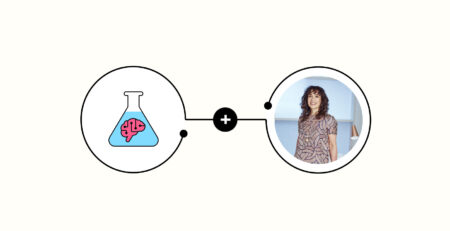Advertising on the cookieless web: 4 steps to protect your data now
Advertisers, your data is at risk.
From legislative changes like CCPA to technical developments like ITP, the foundations of data that digital marketing has been built on are crumbling. And this momentum is snowballing with more and more changes on the horizon: Apple is now requires opt-in tracking in iOS 14, and Google is following their lead by limiting third-party cookies in Chrome in early 2022 and possibly even cross-app tracking.
Unless businesses act now, marketers soon won’t be able to collect the data they’re used to, which will impact a number of key functions like planning, bidding, selecting and targeting audiences, attribution, and ultimately ROI…
Luckily, there is still time to prepare. So buckle up, and make the leap into the exciting world of first-party data activation.
You have a year to sort your first-party data strategy out
In order to mitigate loss before it’s too late, you need to decrease your reliance on third-party tracking and invest in your first-party data strategy.
Look at it this way: where in the past, big tech firms like Google and Facebook did the work for marketers by tracking users around the internet, now marketers must do their own first-party data collection with transparency for users.
Chrome limiting cookies next year will be the final nail in the coffin for third-party data, so you need to get ready ASAP.
Before you get overwhelmed by all the literature out there and possible solutions, you need to stop and take stock.
Ask yourself the following question: is your business ready on a structural level and on a technical level? These are the two gaps in internal expertise that are likely holding you back from reaching that ideal state.
Break the organisational barriers
According to a recent article in the Harvard Business Review, the biggest obstacle for businesses on the way to being data-driven is not technical, but cultural. Even when businesses invest in data-driven initiatives, they struggle to make progress due to legacy organisational structures, outdated processes, and inflexible cultures.
Data science is not a rigid academic pursuit, but a problem-solving mindset anyone can adopt.
First and foremost, it’s vital to address data sharing issues across departments. Otherwise, you end up in a situation where you might be collecting plenty of data but not doing anything with it. Relevant teams must have access to relevant data so that everyone can get on the same page to understand the full impact of privacy measures, settle on measurable KPIs, and set up a system for decision-making with data (e.g. are you measuring customer lifetime value?). This is a time-intensive, but completely necessary operation to undertake.
Review your organisation’s privacy awareness, and train employees on the latest developments or hire data-savvy talent. Be ready to go through a top-down cultural revolution, break down internal silos, and scrap familiar processes. Set up a specific team to oversee this transition, but buy-in from across the whole company and especially the leadership team is key for progress to happen.
Tackle the technical obstacles
There are three key things that have to be re-evaluated on the technical side in order to ensure you are able to gather high quality first-party data.
First, you need to assess your current set-up. Start with a thorough audit of your current data collection processes: review your website tagging, and audit tracking across all your media platforms, from Google Ads to Facebook Ads.
Next, you have to ensure your first-party data is being imported into the right platforms, and that your tech stack enables data sharing. For example, setting up a CRM data import into your analytics tools, and offline conversion imports into your ad platforms will enable you to connect the online and offline customer journey
Finally, for data to be accessed across teams, you need unified tech stacks that enable sharing and allow you to import rich CRM data into the right ad platforms. This will enable you to leverage that data in audiences and bidding, using advanced insights to execute advanced strategies.
It also won’t hurt to familiarise yourself with alternative measurement solutions such as econometrics and geo-testing, and know when/how to use them.
4 practical steps you can take to protect your business today
If you understand what’s at stake and are ready to work on the above, here are a few tips to get the ball rolling on switching to a first-party data strategy.
1. Implement sitewide tagging
I recommend implementing Google Sitewide Tagging to maximise your use of first-party cookies across the Google stack. Use Google’s Global Site Tag set to first-party cookies on your domain to ensure that Google Ads can measure conversions more accurately, with Conversion Linker tags enabled in Google Tag Manager. Make sure you’re capturing as much data as you can from key events and tracking micro-conversions such as time on site, product views and cart adds.
2. Prepare Facebook for iOS 14
if you’re advertising on Facebook, your campaigns will be affected by the iOS update. There’s a few actions to take: verify your brand’s domain, update the Facebook SDK, and priorities pixel events to mitigate data loss. You might also want to look into Facebook’s Conversion API as a long-term solution to cookieless tracking.
3. Review cookie consent policies
Make sure consent mechanisms comply with legislation in your operating regions and that tracking is implemented according to this. If your business is using a consent management solution, you could test Google Consent Mode (which is currently in beta), which provides granular Google tracking options and will be used in future for conversion modelling algorithms.
4. Future-proof your analytics
Consider moving to an analytics solution designed for cookieless tracking. We recommend upgrading to Google Analytics 4 because in future it will include advanced machine learning that fills in gaps of data and preserves campaign insights, plus first-party audience integrations data will increase remarketing audience pools. It also comes with a free BigQuery data export which will let you link your analytics and customer data to measure customer lifetime value.
Change your mindset from threat to opportunity
Don’t get the wrong idea: although there is a necessity here to protect your business, this is actually a great opportunity to take ownership over how data is used within your organisation and improve it for the better.
If you can get your business in a place where you’re collecting high quality data on your customers and key business drivers, connecting that data across teams and platforms to share insights, and activating the insights from that data by feeding them back into your marketing strategies… Well, you’re golden!
But it’s important to be realistic about data, and your own limitations before you create your strategic roadmap. There are some amazing long-term benefits for advertisers who maximise their first-party data, but for many there’s a long road ahead. So take it one step at a time – but start walking today or you won’t make it on time.



